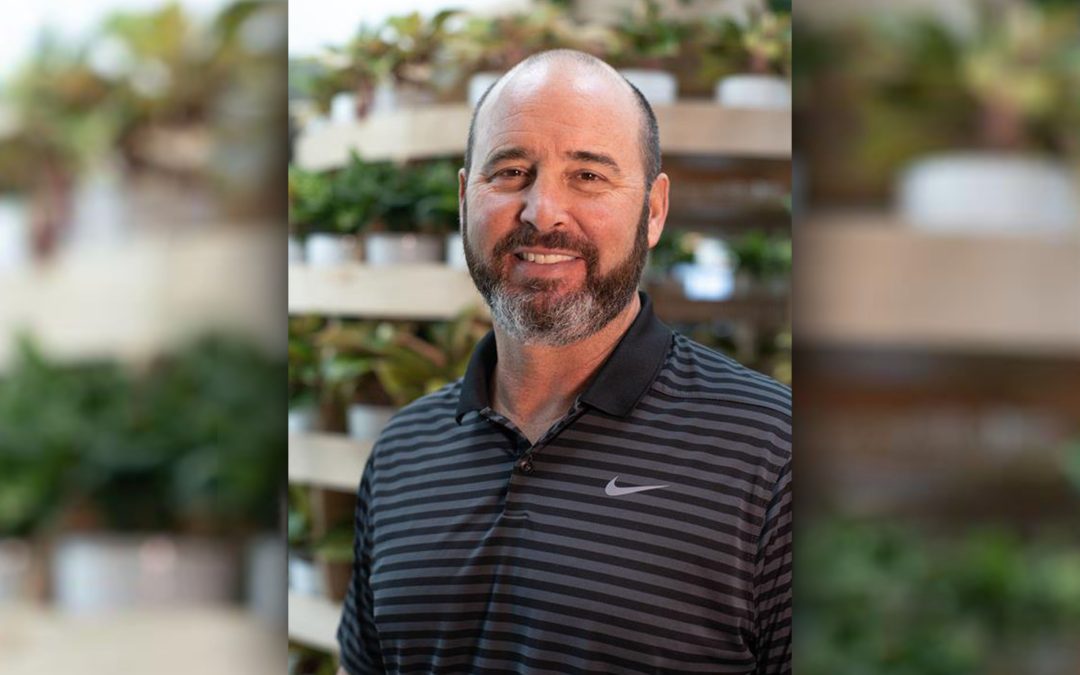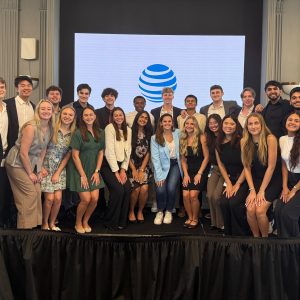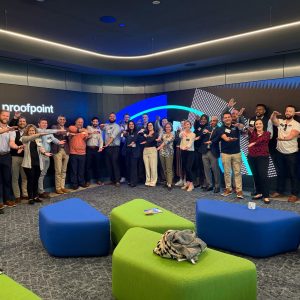Rooted in solutions
How CEO Joche Smith’s (BSIS ’89, MBA ’91) problem-solving approach grows Costa Farms.
Sowing seeds
Problem solving has long been a part of Jose “Joche” Smith’s identity. As someone who’s dealt with his fair share of challenges, his penchant for solutions has served him well on several occasions throughout his life and career.
The first significant challenge came early on in his college career. The son and brother of Georgia Tech-educated engineers, Smith (BSIS ’89, MBA ’91) followed his familial footsteps to an engineering program in his hometown at the University of Miami. A strong academic record earned him scholarship funding that covered more than half of the cost to attend the private university.
Despite being a good student in high school, Smith struggled in his freshman year and ultimately lost his scholarship. Scrambling to figure out the next steps in his college education, Smith found his solution in transferring to the University of Florida. Offering a more affordable option, Smith recognized that the University of Florida’s engineering program also came with a stellar reputation and a degree that could give him plenty of career opportunities.
“I believe engineers can do anything,” he said. “I always thought that [engineering] was a versatile degree that I could use to work in lots of different fields and do lots of problem solving.”
Cultivating knowledge
Closing in on the completion of his engineering degree, Smith encountered his next big challenge – getting into the Warrington College of Business’ MBA program.
“I kept hearing that an MBA was a great option to pair with an engineering degree, so I decided that it was going to be my next step,” he recalled.
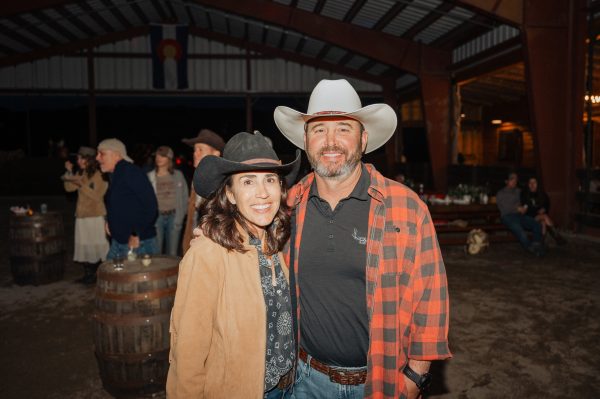
High school sweethearts Maria Costa-Smith and Joche Smith married during their time at the University of Florida.
While Smith was in his senior year of college, he asked his high school sweetheart Maria Costa-Smith (BS ’90, MS ’91) to be his wife. With Maria’s ‘yes’, the couple planned on getting married between Maria’s junior and senior year of her horticulture degree program at the University of Florida, about a year after Smith finished his degree.
If Smith were admitted to the MBA program, the couple could stay in Gainesville for a bit longer while Maria completed her studies and Smith could earn a second degree that would further his career opportunities.
Despite having a solid plan, Smith didn’t have all that he needed to get into the MBA program, including two years of work experience and a strong GPA.
Smith went into problem-solving mode, and ultimately ended up with an acceptance letter into the MBA program thanks to a few calls, his father’s assistance and an interview that helped sway the admissions committee.
His engineering and business degrees in hand, Smith returned with his bride to Miami, where he landed a job in pricing with trucking and logistics company Ryder. Maria went to work for her family’s business, Costa Farms, a then-30-year-old farm that started with just 30 acres of tomatoes and calamondin citrus by Maria’s grandfather, Jose Costa, Sr.
After about a year with Ryder, Smith was lured into the family business. He joined Costa Farms in June 1992 and was named CEO just a few years later, a role he’s now been in for close to 30 years.
Transformational growth
Just two months into his career at Costa Farms, Smith encountered what would be among his most significant personal and professional challenges – the impact of Hurricane Andrew. The historic Category 5 storm wiped out Costa’s nursery, among the $25 billion in damage done to the area.
“I went from building spreadsheets and modeling financial information to doing the physical labor of cleaning up after the hurricane,” he said. “It truly was the most difficult time, but it gave us a great opportunity.”
Leaning into his problem-solving skills once again, Smith and the Costa leadership team came up with a plan to reinvigorate the company, which included a $6 million loan and buying back assets that previous family ownership had sold in the aftermath of the storm.
“I used to lie all the time to my wife and mother-in-law,” Smith recalled. “They’d ask, ‘are we going to be able to pay all of our bills this month?’ And I’d say ‘yes,’ but would immediately have to call our biggest customers and ask if they could send us our payment sooner so we could cover our expenses.”
By the end of 1993, Costa Farms started its upward trajectory of growth. Closing out the year with $13 million in sales, the company has risen in the decades since to over $700 million in sales. Costa has also expanded into a number of other products, including annuals, perennials and other exotic plants in its lineup of plant product offerings.
Today, Costa Farms is among the top largest plant nurseries in the world, with farm locations from South Florida to Virginia in the United States and buying offices across Asia, including in China and Vietnam.
“I learned so much during that time [after Hurricane Andrew], and I think we all gained a lot of credibility,” Smith said. “We were really a bunch of 20-year-olds who had to grow up quickly and cut our teeth through experience.”
Nurturing leadership
With more than three decades at Costa Farms under his belt, the focus of Smith’s role has shifted over the years. For a large portion of his career, he was the main relationship manager for Costa’s largest customers, like Lowe’s, Home Depot and Walmart.
He’s since handed over those responsibilities to other senior leaders on the team, including his son Jose, who leads Costa’s sales and merchandizing. Now, Smith sees two other areas in his duties as his main focus – setting strategic direction and serving as a coach.
“A critical part of what we do with the team is decide how many plants we’re going to grow,” he explained. “We take on a lot of risk when we make decisions as a replenishment business.”
Costa’s ‘replenishment business’ means that when plants sell out in a retail store, the company then sends new plants to replenish the stock. Currently, Costa replenishes over 5,000 retail stores with over 200 items per week.
The complexity of the process is immense, Smith explained. Because demand can fluctuate throughout the year, it requires a lot of strategic insights to determine how many plants the company needs to grow. While growing plans are usually made 1-2 years in advance, there’s still many factors that can impact the plan.
After helping set the direction for important decisions like plant supply, Smith then turns his attention to coaching and setting the team up for success.
“I really am just working on the guardrails for the team,” he explained. “In my role, I do more blocking than scoring. I open up holes for them to score and eliminate the roadblocks that will help them win.”
For Smith, seeing his team support each other and come out on top is the ultimate success for Costa Farms.
“You hear talk about people being your biggest asset, so much so that it’s almost cliché, but to me, it’s everything” he said. “I will do anything for the people who are committed to the cause.”
Smith keeps his team committed to the Costa Farms cause through staying true to the company’s values and setting a clear path to success, both of which he advises others consider as they are on the leadership path.
“Your team always needs a true North,” he advised. “Giving them a direction that everyone can follow without having them try and figure it out on their own is critical. [The direction] can be wrong, but that’s ok, because it can always be adjusted to get the boat going back in the right direction. Giving [the team] clear expectations and holding them accountable, those are the basics, though.”
Strong roots
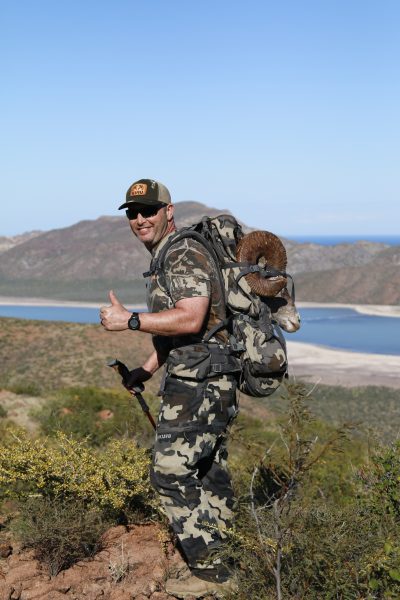
Smith, an avid outdoorsman, enjoys spending time with his family in the mountains of Colorado.
While leading his professional team at Costa Farms continues to be a significant focus for Smith, he also prioritizes his personal team – Maria, his three sons and grandchild. With Maria and two of his sons working at Costa, the Smiths continue the Costa Farms family business tradition.
While Costa Farm’s plants need the warmth and sunshine of the South to thrive, Smith and his family find their growth in the mountains of Colorado, where they enjoy spending time together in the rugged terrain of the American West. An avid outdoorsman, Smith has a particular love for bow hunting, a skill he honed while a student at the University of Florida.
“The area around Gainesville is somewhere I’ve always really liked,” he recalled. “I definitely used to sometimes go hunt in the morning before class or in the afternoons after class ended.”


